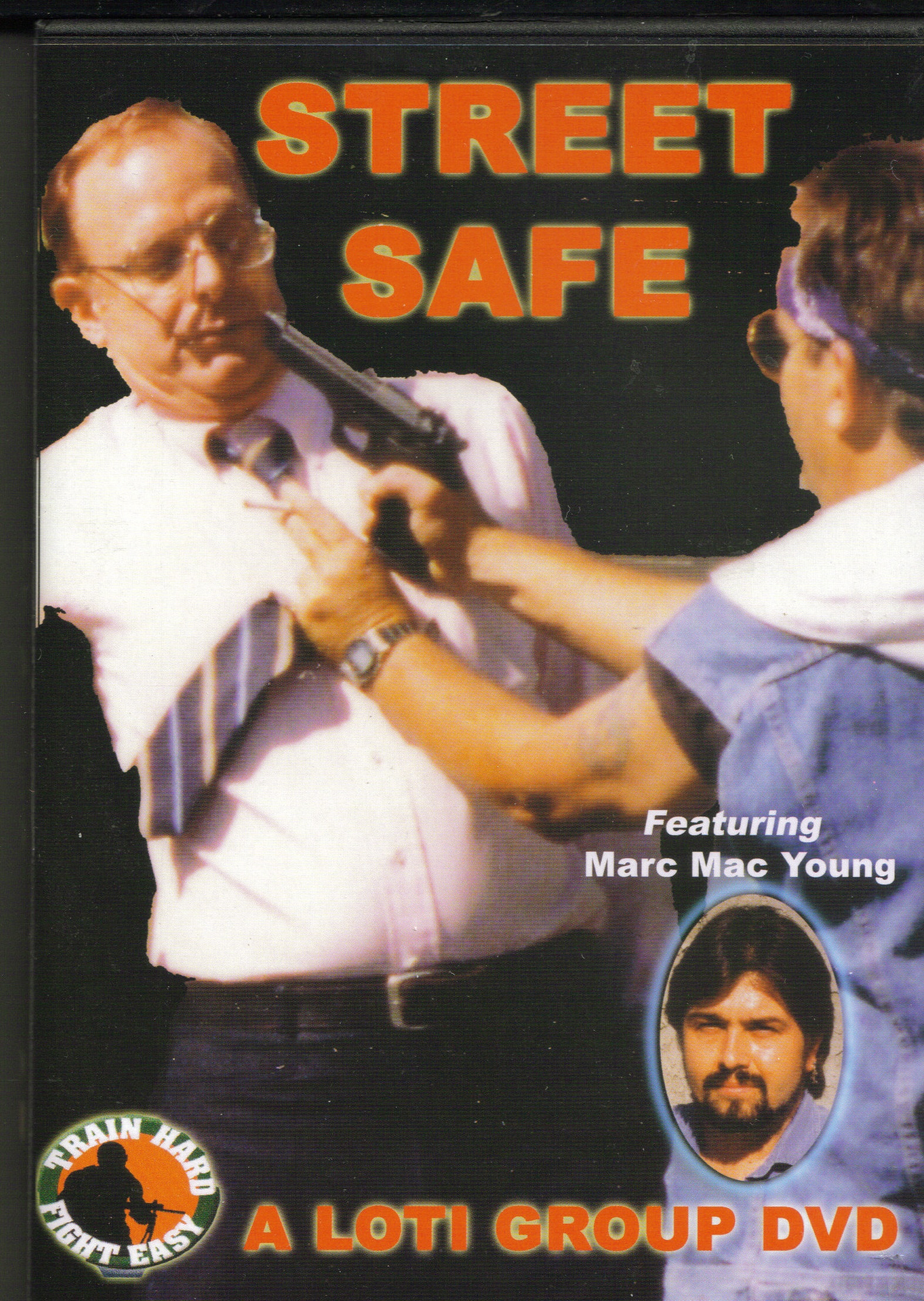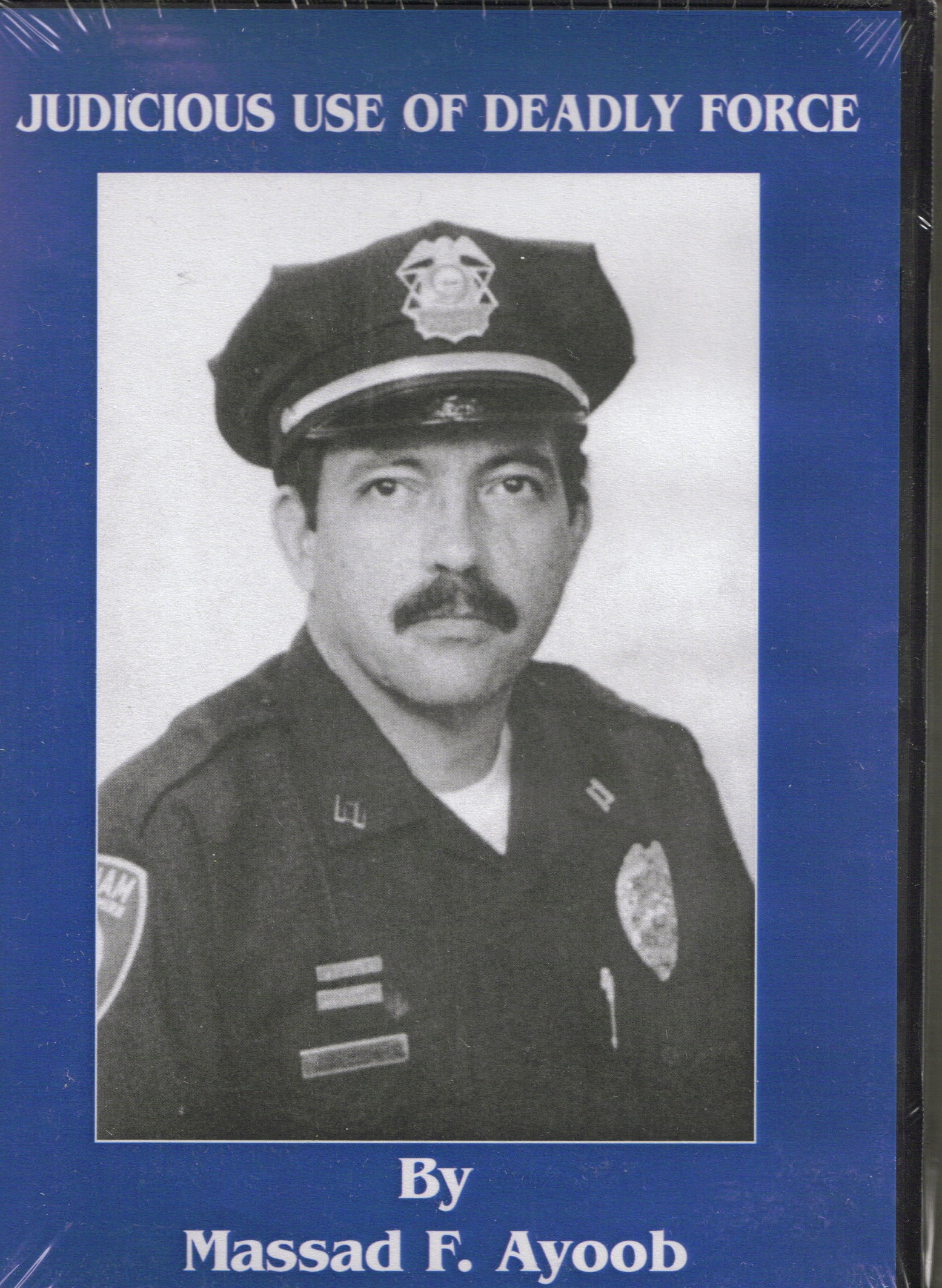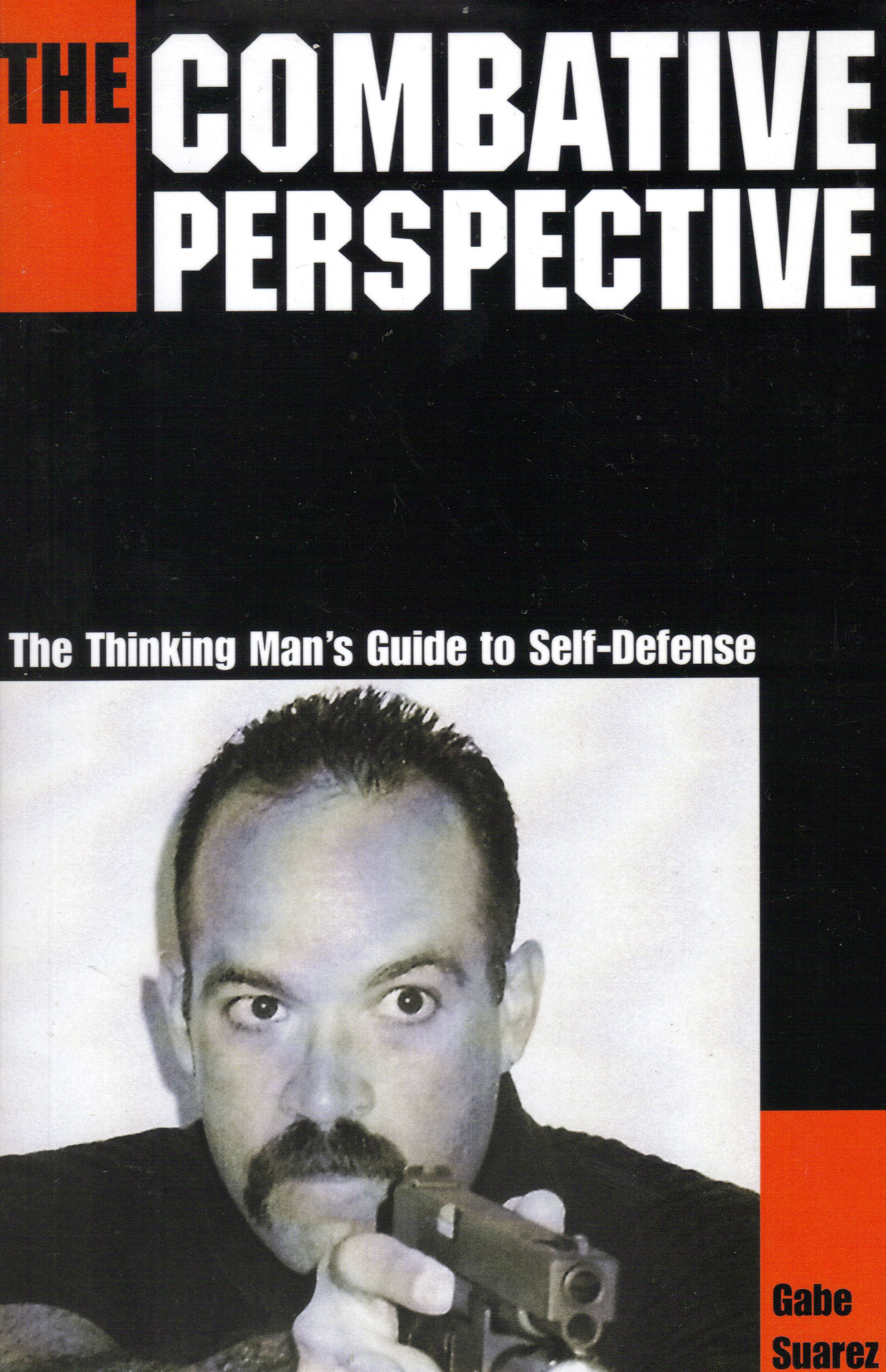Marc MacYoung?
Dianna Gordon MacYoung?
Animal E-list
Crime Avoidance Lectures
Crime Blog
Colorado Classes
Contact Us
FAQs
Hosting A Seminar
Crime Prevention
Expert Witness
Knife Defense
Law Enforcement
Martial Arts
Military
Movie Consulting
Women's Self-Defense
Links
Our Linking Policy
On-line Store
Train with MacYoung
Testimonials
Terms of Use
Topics
of Interest
On this page:
Five stages of Violent Crime |
Intent |
Interview |
Positioning|
Attack |
Reaction|
AOI (shorthand version) |
Conclusion
The Five Stages of Violent Crime is an internationally recognized system to identify if -- and determine when and if -- you are being set up for a crime or violence. The information contained on this page is from DVD/video, Street Safe: How to Recognize and Avoid Violent Crime. It is used by police, military and firearms instructors around the world as a training and teaching tool. Also the system is taught internationally in self defense and crime prevention courses(1).
While we strongly advocate awareness and avoidance as a primary means for personal safety sometimes that isn't enough. The Five Stages of Violent Crime has been tested in court as an easily explainable standard by which individuals determined if they were legally justified to use self defense tactics. Remember, when it comes to violence there are usually legal repercussions. Therefore we strongly advocate you know when you are justified to use force.
The Five Stages of Violent
Crime:
Crime and violence are
processes that take
time to develop. The attack is
not the first step, the preliminary triangle must be built. There
are five distinct stages that are easily identified:
1)
Intent
2)
Interview
3)
Positioning
4)
Attack
5)
Reaction
During the first three stages, you can prevent an attack without the use of violence. These are where the criminal (or violent person) decides whether or not he can get away with it. He may want to (Intent), but if he doesn't have the opportunity (Positioning) he cannot succeed. The Interview is his way to double check if you are safe for him to attack. If these conditions are not met, he will not attack!
What we are about to say is not hyperbole. Selecting a safe victim is a matter of life or death for the criminal. If he picks the wrong target, he's the one who is going to die. Therefore, he's going to make sure he can successfully use violence against you (Interview and Positioning) before he commits himself to act. Once he is sure of his ability to succeed -- and has put you in a position where he can quickly overwhelm you -- he will attack.
Below is a shorthand version of the five stages. Each is linked to a more in-depth look at the subject:
Intent
By intent, we don't mean that you are a psychic. You cannot read
someone's mind. Although the word 'intent' has often been replaced in court with
Jeopardy (acting in a way that is consistent with known pre-attack behaviors) we
still use the term 'intent' for a simple reason. With this system, intent is
not what is going on inside of the person's head.
It's the visible and discernable physiological manifestations that, a person ready to commit violence, will display. This isn't you being psychic. This is his body displaying these signs, no matter how hard he tries to hide it.
This is where the person crosses a normal mental boundary. From this point, the person is mentally and physically prepared to commit violence in order to get what he wants – whatever that may be. Being able to recognize when intent is present is one of the key components of your personal safety. yet, this isn't always easy as you might think. The criminal has often learned how to mask it behind words and feigned innocence. But once you know how to spot the physiological signs, it is easily recognizable. Learn more about intent.
Interview
With all violence, the assailant's safety is a critical factor in
deciding whether or not to attack. While in interpersonal violence, the deciding
factor may be anger, strong emotion or
pride. However, with criminal violence it is more of a
conscious decision. This leads us to the interview, where the criminal decides
upon your suitability as a victim. There are several kinds of
interviews
common to criminal attacks
Positioning
This is the criminal putting himself in a place where he
can successfully attack you. A criminal (or even a
violent person) doesn't want to fight you; he wants to
overwhelm you. To do this, he has to put himself in a
position where he can do it quickly and effectively. An
attempt to develop positioning is the final proof of ill
intent. Someone trying to position himself to attack
removes all doubt that the situation is innocent. Like
the Interview, there are several kinds of
Positioning.
Attack
The attack is the when the criminal/violent person
commits himself to using
force -- or the threat of force -- to get what he
wants. Like the other stages there are important
distinctions to be made about the kind of
attack
you will face.
Reaction
Reaction is how the criminal feels about what he has
done. However, this is made more complicated by the fact
that your
reaction is an important contributing factor.
AOI (Short-hand version)
What follows is a parallel system to the Five Stages of Violent Crime. AOI
 stands for Ability, Opportunity and Intent. Although not as complete as the Five
Stages, it will give you a quick-rule-of-thumb set of standards to determine
whether or not you are in danger. While the Five Stages is more complete, for
people who are not particularly interested in self-defense, AOI is a nice set of
fast and easy guidelines. We present both models for you to select which works
best for you.
stands for Ability, Opportunity and Intent. Although not as complete as the Five
Stages, it will give you a quick-rule-of-thumb set of standards to determine
whether or not you are in danger. While the Five Stages is more complete, for
people who are not particularly interested in self-defense, AOI is a nice set of
fast and easy guidelines. We present both models for you to select which works
best for you.
There is a concept called the triangle among firefighters. Along each side is an element that a fire needs in order to burn. If you take away one of these elements, the triangle collapses and the fire goes out. Crime is the same: In order for it to occur, there must be three basic elements
This is easily remembered as A.O.I. (Ability, Opportunity and Intent). Take away any one of these elements and the triangle collapses. In other words, the crime does not have what it needs to occur.
Ability: Does the person have the ability to attack you? Could this person successfully assault you, whether through physical prowess, a weapon or numerical superiority? Many women underestimate male upper-body strength and how vulnerable they are to being physically overwhelmed.
Opportunity: Does this person have the opportunity to attack you? Are you alone with him or even in an area beyond immediate help? Could anyone come to your assistance within twenty seconds or less? As many victims have found, you can be robbed in plain view or raped with people in the next room.
Intent: Is he in a mental place where using violence to get what he wants makes sense to him?
Of the three, intent is the most nebulous, yet it is vital for determining who is a threat. It is the literally the difference between going off with someone to talk and being raped. Skip over to Intent page and to the profile of a rapist. Acquainting yourself with the criminal mindset is also highly recommended.
The fastest way to figure out if you are in potential danger is to look for these three elements. If you see one, look for the others. If you see two out of three stop whatever else you are doing and pay close attention for a moment. If you see him trying to develop the third, withdraw from the situation to a safer area. This is easier than using physical violence. As you will soon see, opportunity often means staying in an area where someone could effectively use physical violence against you. If you do not see these elements then odds are you are safe. There is no triangle.
If you wish to adhere to a more legally sanctioned idea, you can exchange the I of Intent for a K of Known (for known dangerous behavior = jeopardy). This turns it into the acronym A-OK. Which might be easier for someone to remember.
Conclusion
Knowing the five stages is a standardized guide by which you can assess the
potential threat of a situation. These five stages are inherent within crime and
violence. What is important to realize is that the first three stages might not
occur in that particular order. A violent and
selfish person may suddenly find himself with the perfect
opportunity/ability to commit a rape, and suddenly the intent appears. There was
no conscious initial decision, but the circumstances developed. Due to an
intrinsic flaw in his personality, he can decide to act in a violent manner.
This is why you always need to check for ability, opportunity and intent (AOI).
As stated the Pyramid of Personal Safety was developed to counter the Five Stages. As the criminal must develop these stages in order to successfully attack you, the pyramid undermines his attempts. By foiling him instead attempting to contest him, you can avoid using violence in all but the most extreme circumstances.
Two major problems exist regarding self-defense. The first is knowing when to use it. How do we know when is the right time? How can we be sure we are not overreacting or starting at shadows? We should all have reservations about using force. Much of this confusion is alleviated by having a proven and external set of standards to compare a situation against. If you don't see the triangle, it is not the time to use violence.
The other problem with self-defense is the legal ramifications. In many states, you risk being prosecuted for "attempted self-defense," both on a criminal and civil front. What was an obvious threat at the time can be later undermined in court by an attorney. When the DA asks how you knew you were in immediate danger you had better have a better answer than "he looked at me mean."
If you end up in court to defend your defending yourself, either system will help you clarify and rationally explain why you thought your actions were warranted.
The DVD Street Safe shows you what has been discussed on this page.

1)LEGAL WARNING: This is a condensed version of information found in my book, Safe in the City and the video/DVD Street Safe/Safe in the Streets. While it is offered to the general public for personal use, it (like everything else on this Web site) is copyrighted and registered material. Commercial dissemination of this system without express permission from, or credit to, the author constitutes infringement. Return to text
2) In fact, the reason that we use smilies/emoticons on the internet is to imitate facial expressions and tone of voice in print. Items like a laughing face :D or a smile :) indicate that we say that in jest and no offense is meant. This is the same principle in action. It is interesting to note, that nobody "legistated" or insisted that emoticons have to be used. Human communication is such that the idea caught on all by itself in order to assist in making ourselves clear over email and the internet. Non-verbal signals are a powerful and critical part of human interaction Return to text


Street Safe: How to Recognize
and Avoid Violent Crime
Learn More >
Order Now!

The Missing Link: Self-Protection Through Awareness,
Avoidance and De-Escalation
Learn More >
Order Now!

The Missing Link: Self-Protection Through Awareness,
Avoidance and De-Escalation
Learn More >
Order Now!

Deadly Force Encounters
Learn More >
Order Now!

Escape Combatives
Special Bonus Feature
ESCAPE DRIVING
Learn More >
Order Now!

Real World Self-Defense
Learn More >
Order Now!

Safe in the City
Learn More >
Order Now!

In the Gravest Extreme
Learn More >
Order Now!

Street Smarts, Firearms and Personal Security
Learn More >
Order Now!

Judicious
Use of Deadly Force
Learn More >
Order Now!

The Bulletproof Mind
Learn More >
Order Now!

Affordable Security
Learn More >
Order Now!

The Combat Perspective: A Thinking Man's Guide
to
Self-Defense
Learn More >
Order Now!

Cute Lawyer Tricks
Learn More >
Order Now!

CQB Clearing Tactics For First Responders/ Patrol Tactics for 911 Officer
Learn More >
Order Now!

Surviving a Street Knife Attack
Learn More >
Order Now!
| About navigating this site | Animal List | Bibliography | Bullies | Burglary while on vacation | Classes in Colorado | Car Jacking | Children and Martial Arts | Child Safety | Criminal Mindset | Cults in MA/SD | De-Escalation | E-mail Dianna | E-mail Marc| FAQs | Have MacYoung speak about crime avoidance | Home Page | Home Defense | Hosting a Seminar | Fear | Five Stages of Crime | Knife Fighting | Legal Issues | LEO/Correctional Officer/EMS | Linking policy | Links | Martial Arts | Photo Gallery | Property Crime | Psychology | Rape | Robbery | Safe Dating | Self-Defense Training | Selling your books/DVDs on NNSD | Seminar Schedule | Stalking/Domestic Violence | Street Fighting | Terms of Use | Testimonials | Train with Marc MacYoung | Who is Dianna Gordon MacYoung? | Who is Marc "Animal" MacYoung? | Victimhood | Workplace Problems | Zero Tolerance | ||
| ? 1998-2008 No Nonsense Self-Defense, LLC. All rights reserved. |